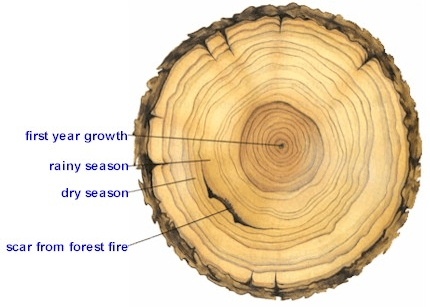27
3
Introduction
Yesterday I saw a birthday puzzle. Congrats!!
Also this week I watched an episode of the TV show Bones where a dead body was found buried under a tree. To calculate the time of death, they counted the tree rings.
Tree rings form because trees grow slower during the winter and faster during the summer. Thus you can calculate the tree's age by counting the rings. Also you can see natural events like rainy or dry seasons.
Challenge
Given an integer n >= 1 as input, write a full program to output the tree age rings.
Because rings can change of shape use three diferent characters ('0', '*', '+') to show climate cycles.
Age 1
0
Age 2
***
*0*
***
Age 3
+++++
+***+
+*0*+
+***+
+++++
Age 4
0000000
0+++++0
0+***+0
0+*0*+0
0+***+0
0+++++0
0000000
Size of the tree is a square of sides 2*n - 1
Winning
Shortest code in bytes wins.


What about when age=5? – Blue – 2015-09-09T17:14:17.190
3the rings have a three steps cycle.
('0', '*', '+')so 5 year is*– Juan Carlos Oropeza – 2015-09-09T17:15:41.367Is the size the area, the perimeter or the length of each side? – Beta Decay – 2015-09-10T06:11:29.330
@BetaDecay I update the question. If you can suggest a better wording let me know. – Juan Carlos Oropeza – 2015-09-10T15:08:44.503
I think this question would have some more character to it if you had to paint a tree's growth pattern incorporating the effects of the seasons and natural events. – Luminous – 2015-09-10T17:14:57.727
@Luminous I tought in use a bigger array and request for a random char to describe unpredictable climate. But tought will complicate much for my first problem – Juan Carlos Oropeza – 2015-09-10T17:17:56.767
That first problem being?? – Luminous – 2015-09-10T17:21:30.107
@Luminous I mean my first problem question in Code golf. – Juan Carlos Oropeza – 2015-09-10T17:23:03.833
Oh! You don't have to subject yourself to something that's more simple than what you can imagine because it's your first problem. That's what the sandbox is for. – Luminous – 2015-09-10T17:26:06.467